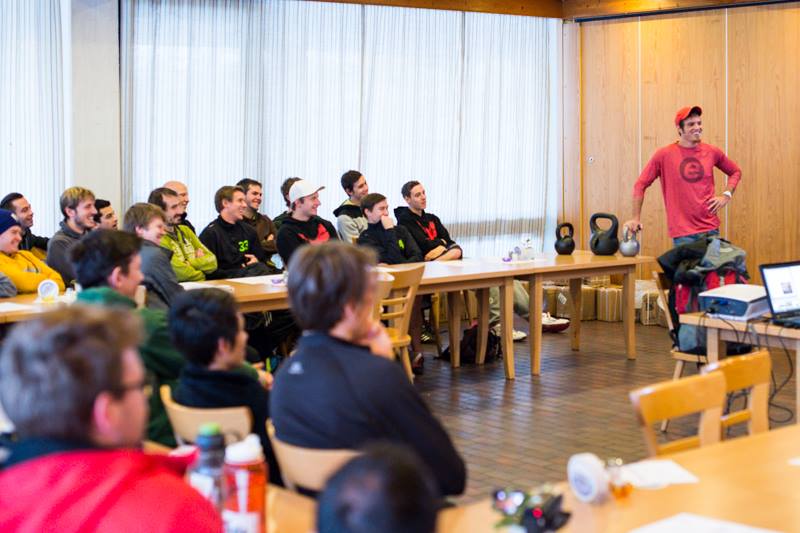January 21, 2014 by Glenn Poole in Analysis with 3 comments
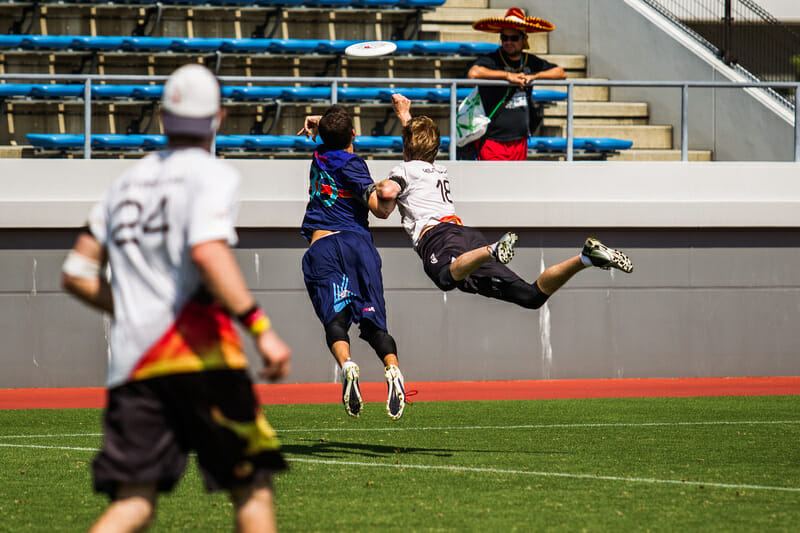
It’s almost trite to describe the current state of Ultimate as the most exciting phase of the sport’s development in forty years. Does not every generation believe that theirs is either zenith or nadir? But nonetheless it’s true that much is changing in this little community of ours, and more than ever that those changes are being mirrored worldwide. Cite as evidence the preliminary recognition of Ultimate by the IOC, the popularity of Ultimate for spectators at the World Games in Cali, and the resurging trend of teams investing in international competitiveness.
That last part is particularly interesting I think, because it represents a tangible recognition of how players value competition. Participation is ipso facto an investment of time, tournaments have always involved additional costs in travel and fees, and it’s not news that people are willing to travel long distances for a particularly great experience. Paganello, Windmill Windup, Lei Out and Potlatch—players flock from all over the world for these. What’s less obvious is that people would invest their time and money in preparation for participation.
What kind of preparation? Briefly: in 2013 the UK club open team Clapham flew in from London to play at Chesapeake Invite, teams from Colombia and Denmark competed at US Open, RISE UP hosted a very successful training camp and conference in conjunction with Windmill Windup, Melissa Witmer visited seven cities in Colombia over six weeks teaching fitness clinics, and Tim Morrill completed an entire tour of Europe in 2013 funded by the money people paid to train with him. The international market for athletic training programs and coaching materials points to a strong interest in “catching up” to teams in North America—though the United States swept practically all divisions of recent World Championships, abroad teams are looking to close that gap. To do it they’re paying for American coaches and trainers, professionals at the forefront of performance in Ultimate.
This is where the lines between athlete and amateur get blurred. According to the Bureau of Labor Statistics, almost 12,500 Americans made a living as an athlete in 2012, with a median pay of just $40,000/year. That number is inflated, however, with income from major league players earning major league endorsement deals. The average for runners, for example, is closer to $15,000/year, and even the athletes at the bottom of that pay scale have lives consumed by training and preparation. In contrast, the amateur runner might spend a significant amount of time training, may shell out hundreds of dollars for shoes and apparel each year, but doesn’t generally come close to the dedication of a professional athlete, who will retain an agent and attend training camps regularly to achieve his or her goals. What we are seeing in Ultimate is the investment in that kind of dedication to preparation, even from players who entertain no hopes of being paid to play.
We’re not talking about the semi-pro athletes of the MLU and AUDL, either. It’s obvious that these leagues would employ coaches and trainers for their players, investing in their development as athletes for the sake of their business model. The Seattle Rainmakers hired Ren Caldwell as their fitness trainer in 2012, and as a player for the DC Breeze last year I was grateful to work with a number of professionals whose purpose was to help us perform on the field. What continually inspires me, though, is that non-professional teams are making the same investments, purely for the pursuit of competitive excellence and without any prize money on the line
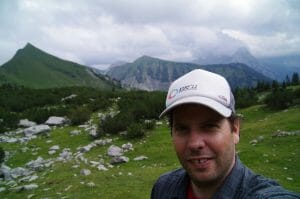
To get a better sense of what these teams are doing and why, I spent some time talking with Stefan Rekitt, coach of the German men’s national team. Since 2005 the team has been making a conscious and concerted effort to reach the next level of international competitiveness, enlisting the support of several Americans along the way. Prior to Worlds in 2012 they flew both Wiggins brothers out to Munich for a training camp, and in 2013 they brought in Tim Morrill for a weekend dedicated to laying the foundation for future competitiveness on the international stage. I also spoke with Tim Morrill about the training camp in Munich, and the rest of his European tour, which for me is an example of the broader trend in Ultimate—Team Germany isn’t the only one investing in professional training, but it is a good microcosm for the whole.
Stefan Rekitt provides an in-depth discussion of German open teams over on Get Horizontal, but here’s a quick summary. After taking 9th place at WUGC 2004, many of the players on Germany’s roster retired from international competition. Together with Phillis Timmermann, Rekitt created Inside Rakete to cultivate talent for the country’s national program and raise the overall competitiveness of club teams in Germany. They decided to maintain an extended national squad continuously, including in years with no national team competition.
As many as sixty German players now participate in weekend training camps throughout the year, including the one taught by Tim Morrill in December. Rekitt believes that the keys to Inside Rakete are “a strong culture of continued development and the use of external coaches”, where “newer players can learn from the more experienced players and we all learn from the external coaches that are supporting us.” The continuity in training and development also helps raise the level of competition across the country: “Since we have not only players from the top teams but also from newer club programs, the skills from the IR program are transferred all over Germany and help to develop our sport on many levels at the same time.”
Other countries have taken notice, too. Sion “Brummie” Scone, Ultiworld columnist and coach of the Great Britain national men’s team, noted in an interview last year that “The German national team invested heavily in [educating coaches], now they have a great setup and can continue to push themselves because they know what they are doing…I just think that an injection of high level coaching can act as a catalyst.” Indeed, and the Germans also approach it as an investment. 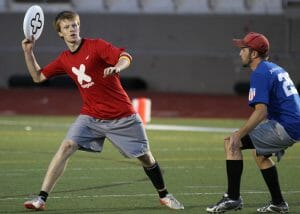 When Philipp Haas was invited to play the 2012 NexGen Tour, the rest of his Inside Rakete teammates supported him financially and looked forward to the experience he’d share with them upon return. Rekitt himself flew to the United States for USAU Nationals in both 2012 and 2013 to watch the teams play, developing insights in what he calls an “internship” with Ironside coach Josh McCarthy. That’s also when he met Tim Morrill and began discussing the possibility of bringing Tim in to train Team Germany.
When Philipp Haas was invited to play the 2012 NexGen Tour, the rest of his Inside Rakete teammates supported him financially and looked forward to the experience he’d share with them upon return. Rekitt himself flew to the United States for USAU Nationals in both 2012 and 2013 to watch the teams play, developing insights in what he calls an “internship” with Ironside coach Josh McCarthy. That’s also when he met Tim Morrill and began discussing the possibility of bringing Tim in to train Team Germany.
Increasing the athletic ability of German players was a priority for Rekitt, drawing a lot from IR captain and athletic trainer Christoph Köble. Köble graduated in 2013 with a degree in sports science, is currently enrolled in a masters program for sports diagnostics and training, and is considering starting his own website one day. Noting that Ultimate has become “much more physical than it was several years ago,” Köble programs workouts for Inside Rakete to try and “close the gap to the American and Canadian teams.” He described Tim Morrill’s training philosophy as a “perfect match” for the Germans, focusing on functional strength and injury prevention as a foundation for raising their overall athleticism. Rekitt agrees: “I was convinced that Tim would be the right guy to work with when I first met him as the Ironside trainer.”
It was a great fit for Morrill as well, who was in the midst of planning a European tour with the help of BULA Europe President Pedro Vargas, Indianapolis Alley Cat (and Austrian native) Marc Huber, and a number of other European players/organizers. The tour kicked off in Lisbon before moving on to Madrid, London, Manchester, Liverpool, Lanzarote, Tenerife, Austria, Slovakia, Munich, Paris, Heidelberg, Cologne and Bonn. That’s a lot of cities, and a lot of European Ultimate players hungry for what Morrill has to offer. As he puts it, “The more people get injured the more people seek out my work. Further the more other groups train, the more players realize that if they don’t train they will get left behind. When Europe sees many of the top US teams getting after it, running faster, jumping higher and reducing injuries, they also want to get on board.”
Inside Rakete was just one of the teams on board for Morrill’s training. According to Köble, “What makes [Morrill] special is the enthusiasm he is working with. He considers details of movements and patterns in Ultimate, and he is able to explain it to every player. They can understand his [training philosophy] and implement it in their own training.” That’s particularly important for teams and players working with a coach for just one weekend, as was the case for Morrill’s European tour. That’s also part of what enables him to provide distance coaching, with clients as far removed as Australia. The way Morrill sees it, he’s “building a global brand…[bringing] resources to the community in the form of educational modules, i.e. The Foundation and Future 1.0.”
He’s right to think of his brand as global, given the kind of international interest that has grown in the last few years. The trend for teams to invest in professional training is also what enables Morrill to succeed as an entrepreneur, fulfilling that demand for quality content, and he’s thrilled to see the demand grow globally. In another Get Horizontal interview, Joel Hogberg of Sweden said he thinks “it’s great to see the sport taking these leaps forward all over Europe. The fact that many more nations have a shot at the medals nowadays shows that we have progressed greatly as a sport.” Morrill agrees, noting that he was “surprised how well the Slovakians did” – though not considered a top program they were “really hungry to learn.” Teams all over are taking cues from the Americans, and especially from leaders in the field like Morrill and Witmer.
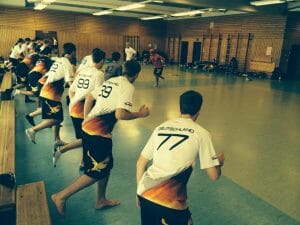 Athletic ability isn’t the only aspect of the game those teams are working on, however. Rekitt identified youth development as a priority in preparing for international competition. He notes that “France has established a very good junior program and they will make use of it in the open division in the near future, I believe. Austria is another example of the growth of the national programs, both youth and open divisions…I have the impression that they will be an upcoming force in the near future. Switzerland has traditionally had a strong program and they have put a lot of effort into developing new players recently.”
Athletic ability isn’t the only aspect of the game those teams are working on, however. Rekitt identified youth development as a priority in preparing for international competition. He notes that “France has established a very good junior program and they will make use of it in the open division in the near future, I believe. Austria is another example of the growth of the national programs, both youth and open divisions…I have the impression that they will be an upcoming force in the near future. Switzerland has traditionally had a strong program and they have put a lot of effort into developing new players recently.”
The perennial Swiss champions, Flying Angels Bern, also make it a priority to seek out international competition, with frequent appearances at Windmill Windup and other top European tournaments. They traveled to Germany this past September for a weekend of scrimmages against the top German club team, Bad Skid—where Köble also serves as captain and athletic trainer. Apart from athleticism, he says that “two things need to be improved to compete with teams like USA and Canada: experience and mental strength. Both can only be learned by regularly playing high level tournaments against the best teams of the world.” For that reason Köble is hoping to spend 2015 in America, working at a strength and conditioning center while playing the USAU Club Series. Philipp Haas did something similar in 2013, playing with Truckstop while sleeping in a teammate’s spare bedroom. Rekitt is also considering a trip for Team Germany to play a tournament in the United States, following the example of Clapham (and Buzz Bullets before them). They know that playing against elite club teams here is the best preparation for Club Worlds 2014 and WUGC 2016.
Flying in coaches from the US, flying here to play in tournaments—these are serious investments for Team Germany, but they are excited to make them. Underlying it all is the conviction that they can reach that next level and compete with the best in the world. Rekitt comments: “I believe that our program will continue to grow because we have established a strong culture for coaching and continuous improvement. Germany should be aiming for gold in EUC 2015 and semifinals in WUGC 2016, and to become the dominant nation in Europe.” Morrill, for his part, is happy to help them reach that goal. “They seem to be very hungry to improve and be the best they can be…Team Germany is in the grooving patterns phase, but with some consistent hard work they will catch up and maybe even rise above many of the American teams.” A big part of that process is investing in Morrill Performance, in training like professional athletes and traveling for the best competition, even though gold medals don’t bring dollars. Beating the best will have to be its own reward, and they’ll have to compete with the rest of the world to do it—but then again, isn’t that the idea?
